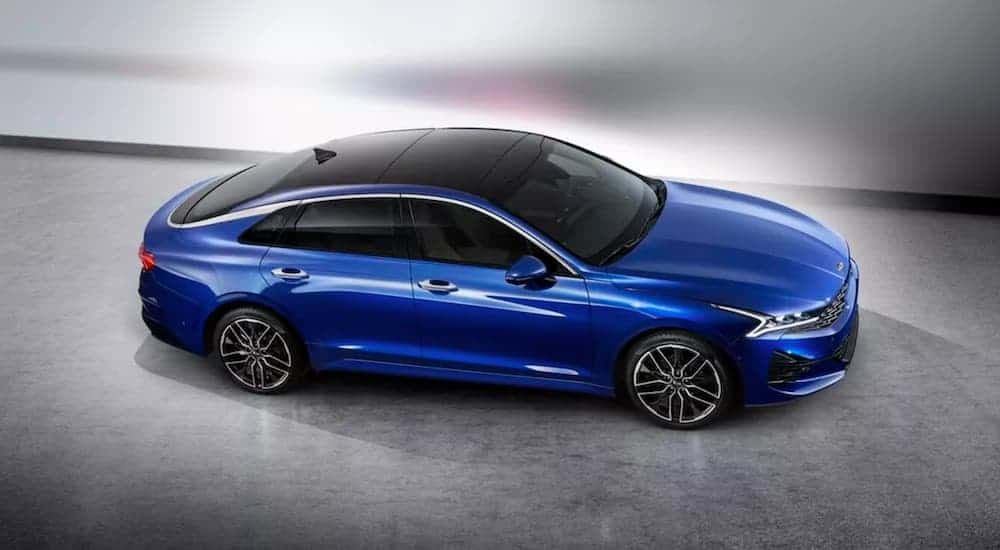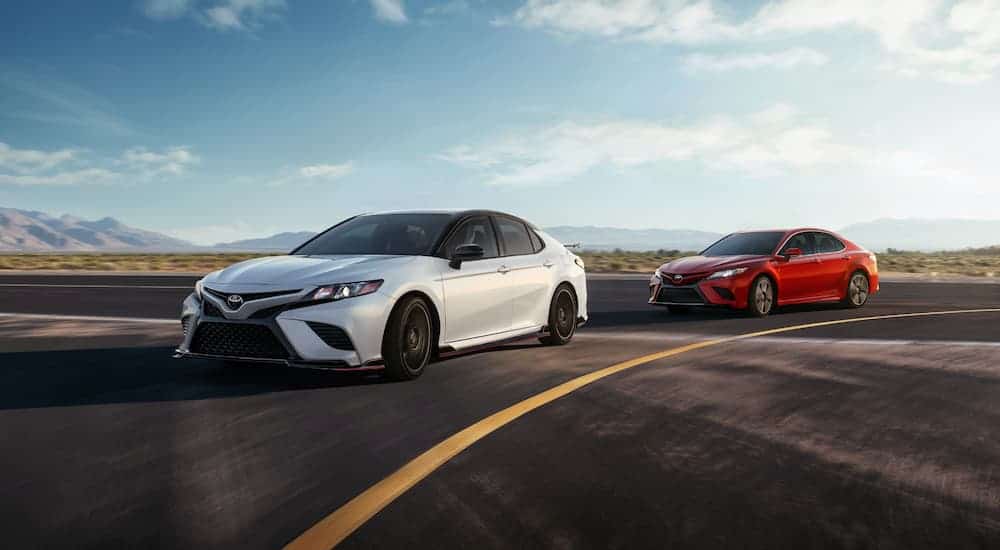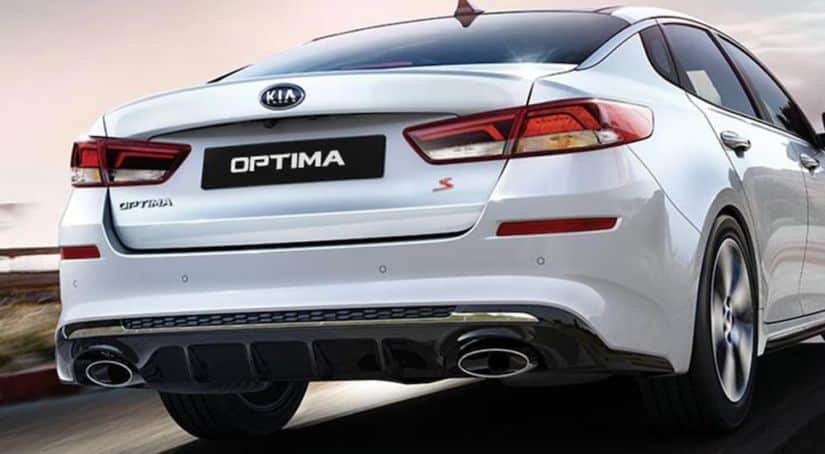There’s little argument that the mid-size sedan segment is one of the most competitive arenas in the automotive market. Honda, Toyota, Ford, Chevrolet, and Nissan seem to be the long-time champions of this market; many feel that this segment is becoming stale. With more and more models discontinued, new winners are emerging, including the 2021 Kia Optima. While the Kia brand has existed since 1944, the South Korean automaker is relatively new on the American market. The first Kia vehicles became available in Portland, Oregon, in 1992, with a very slow and deliberate region-by-region expansion over the next several years.
Today, Kia has become a well-recognized household name across the country, with over half a million of its vehicles sold each year across the United States. While an impressive number for a brand that began producing vehicles stateside within the last decade bear in mind that Toyota Camry alone sold similar numbers for 15 years running. However, while Camry sales began to taper off in 2017, Kia numbers have been on the rise in the past several years. As excitement begins to rise for the 2021 Kia Optima, experts and consumers in the mid-size sedan market are curious- will the new design and technology improvements knock the Toyota Camry out of its comfortable spot in the segment?
2021 Kia Optima – What We Know

The final version of the 2021 Kia Optima isn’t expected to be revealed until summer 2020 at the earliest; however, Kia has made plenty of teasers and pre-release details available to the press.
Currently, everything we know about the 2021 Optima is based on the 2021 K5, a Korean model that has long been the basis for the US Optima. Therefore, it’s highly likely that many of the details that currently grace the K5 will be retooled and reimagined before they land on this side of the ocean. That being said, sources indicate that the exterior design has been finalized.
For many, the new visage of the Optima is surprisingly pleasing—in a good way. The profile has a faster, more muscley appearance than most mid-size sedans, with an aerodynamically-styled “tiger nose” grille and creased hood and side surfaces. A chrome strip continues the “fastback” look, as it runs along both sides of the vehicle, just above the window line before connecting in the rear. The front headlamps are narrow, like a fighter’s squint, with a zigzag running light, giving the car an almost aggressive appearance. The taillights have been compared several times to a heartbeat monitor, with their linear, zigzag pattern.
Historically, the mid-size market has been populated by vehicles that are more docile in appearance, perfect for a commute to the office, and hauling the family around town on the weekends. The implied sneer of the 2021 Optima automatically makes it stand out amongst the competition. At the same time, many vehicles in the mid-size sedan segment are starting to look less like a “Dadmobile” and more “cool,” with respectful nods to their sportier cousins.
Inside, the 2021 Kia Optima seems to be filled with useful and easy-to-use equipment, including a 12.3-inch digital gauge display and a 10.3-inch touchscreen information/entertainment center. Of course, this may change before the Optima appears on the US market, but it seems the new version of the sedan will include many touch-control features and steering wheel-mounted controls, giving driver’s everything they need without creating additional distractions.
Is the American market ready for intuitive touch controls? While it does seem to be the direction many manufacturers are pursuing, critics are concerned that learning how to use the touch zones will be more distracting than Kia engineers anticipate.
Other features that are on the table, if not completely finalized, are door and dash-centric ambient interior lighting, internal air-purification system, ventilated heated seats with leather upholstery, and wireless charging capabilities. Piano black and wooden accents give the interior a premium feel, as well. Ambient sounds are also built into the K5 model, and the navigation system offers peaceful color-coordinated themes.
Current plans indicate the K5s turbocharged 1.6L 4-cylinder engine will be available in the American Optima, which provides 177 horsepower and 195 lb-ft of torque. A 2.0L engine may also be in the works, though details won’t be available until closer to release.
Comparing Sedans to Sedans
In 2019, Toyota Camry sold over 330,000 vehicles, making it number one in the segment. Kia Optima was not far behind, however, coming in at number six with just under 100,000 vehicles sold. This demonstrates the change in American appetite for mid-size sedans, but what do the vehicles themselves contribute to the sales figures?
The 2019 Toyota Camry had a starting price of $24,095. Inspired by critics’ notes that the model was becoming stagnant, the 8th generation of the Camry included more features than ever before, with a sportier appearance. With a choice between a V6 or hybrid engine, drivers were treated to a full suite of safety features, including adaptive cruise control and collision warning with emergency braking, automatic high beams, lane departure warning, and more, depending on the trim level chosen. The 2019 hybrid Camry was able to claim a 52 MPG EPA fuel-rating, which made it the first in the segment to top 50 MPG.
The 2019 Kia Optima came with a lower starting price at $23,820, and impressed drivers with its overall value. The exterior and engineering were both redesigned for 2019, giving it the look and feel of a sporty sedan. While the hybrid version wasn’t able to top Camry’s 52 MPG, it achieved an acceptable fuel economy, with 45 MPG on the hybrid and 36 MPG using its gas-powered engine. Integration with Apple CarPlay and Android Auto gave it an edge over Camry, which did not offer this technology in the 2019 model year. A variety of driving modes help the 2019 models in a variety of conditions, and a Harman Kardon premium sound system certainly turns a few heads, as well.

2020 Changes – But Who Wins?
On paper, the 2020 Kia Optima and Toyota Camry are incredibly similar vehicles. With a standard MSRP of $23,390 to $32,190, the Kia comes in as the less expensive option, as Camry’s MSRP ranges from $24,425 to $35,130. Gas mileage figures are incredibly similar, within a mile or two of difference from each other. Crash and safety ratings are five stars for both models, as well.
There are, of course, a few differences. The 2020 Camry appears to be the most powerful vehicle, with an optional 3.5L V6 engine that achieves 301 horsepower and 267 lb-ft of torque. The Optima’s most powerful engine is a 2.0 turbocharged 4-cylinder that offers 245 horsepower and 260 lb-ft of torque. Additionally, the Camry has a basic warranty that is vastly overshadowed by the Optima; while Kia offers five years/60,000 miles, Toyota only allows three years/36,000 miles.
With so many similarities, much of the overall success of each model in 2020 will depend on user experience and whether interior, safety, and technological features resonate with drivers as intended.
The 2021 Kia Optima might just have all the right stuff to bump the Toyota Camry off of its throne. Though Kia is well-poised to take command of the mid-size sedan market, Toyota has a long legacy with the American population. 2020 will definitely be a year to watch these vehicles, as well as the sedan segment in general. The high-tech, fastback design of the 2021 Optima might appeal to drivers who require the safety and stability of a sedan, but long for something that looks cool.



